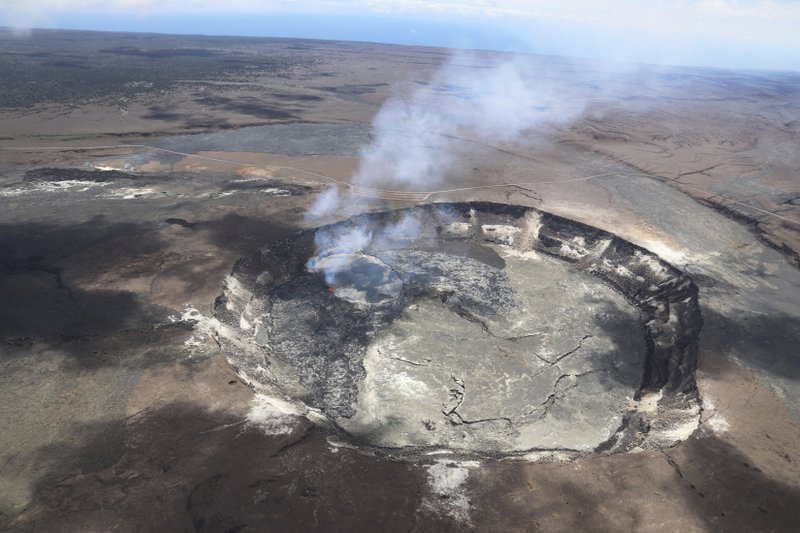Dozens of earthquakes were rattling Hawaii’s Kilauea Volcano on Wednesday as underground magma moved into a new area east of the Puu Oo (POO’-oo OH’-oh) vent.
Officials with the U.S. Geological Survey’s Hawaiian Volcano Observatory said the increased activity is associated with the collapse of the crater floor at Puu Oo, which is an open vent below Kilauea’s summit crater and lava lake.
There were about 50 small quakes detected in the area on Wednesday morning alone.

Scientists say the activity could trigger a new eruption and people are being told to stay away. USGS is sending two ground crews into the area Wednesday to install new monitoring equipment.
The Hawaii Department of Education said a school near the volcano has been closed due to the ongoing seismic activity.
The Big Island’s mayor’s office released a statement saying county, state and federal officials are making preparations for a possible eruption. “The preparations include the identification of shelters, mobilization of police and other security personnel to ensure residents’ safety, and road crews to ensure access to evacuation routes,” the statement said.
“Should an eruption occur, residents along the East Rift Zone may have little warning,” said Civil Defense Administrator Talmadge Magno. “Residents in that area should be prepared to evacuate.”
The Puu Oo crater floor began to collapse Monday, triggering a series of earthquakes and pushing the lava into new underground chambers.
Lava has moved down the east slope of the volcano and into the Big Island’s Puna District. USGS geologist Janet Babb said the magma may have already gone under Highway 130, which leads to a popular volcano access point.
“Overnight it continued to push farther to the east, and so it’s still very much an ongoing situation,” Babb said. “Highway 130 crosses right over the East Rift Zone, so our best estimate is that it has extended beyond the area of Highway 130.”
USGS crews have not seen any changes to the ground or roads in the area where the lava is flowing below the surface. A new crack with some seeping lava was found west of the Puu Oo vent Tuesday, but Babb said the opening did not take much pressure off the situation to the east. “Very, very little lava was issued from that crack.”
Hawaii County Civil Defense Agency closed the area to visitors on Tuesday and ordered private tour companies to stop taking people into the region.
“Residents should heed all advice offered by Civil Defense and take the actions recommended by Civil Defense to prepare for a possible eruption,” Babb said. “An eruption is possible because magma is clearly moving through the East Rift Zone and it could come to the surface. The possibility is definitely there, I can’t give you a probability.”
Babb said similar activity has been recorded prior to previous eruptions in the area. In mid-April the observatory issued an alert when scientists noticed Puu Oo was inflating and becoming pressurized.
If the magma breaks through the ground, lava fountains could shoot skyward and spread rock and other volcanic debris around the area. “Typically when an eruption first starts it’s pretty vigorous,” Babb said.
Most of Kilauea’s activity has been nonexplosive, but a 1924 eruption spewed ash and 10-ton (9-metric ton) rocks into the sky, leaving one man dead.
Puu Oo’s 1983 eruption resulted in lava fountains soaring over 1,500 feet high. In the decades since, the lava flow has buried dozens of square miles (kilometers) of land and destroyed many homes.
In 2008, after a series of small earthquakes, Kilauea’s summit crater opened and gushed lava and rock over 75 acres (30.35 hectares) of the mountain, damaging a nearby visitor overlook.
Last week, the lava lake at the volcano’s summit rose and spilled over the crater edge, marking the largest lava inflation since it erupted in 2008. The latest activity at Puu Oo does not appear to have changed the summit lava lake.
In 2016, lava from Puu Oo crept down the east side of the volcano and reached the ocean for the first time in several years. The flow created new land along the shoreline, some of which later collapsed, opening a giant “firehose ” lava stream.
